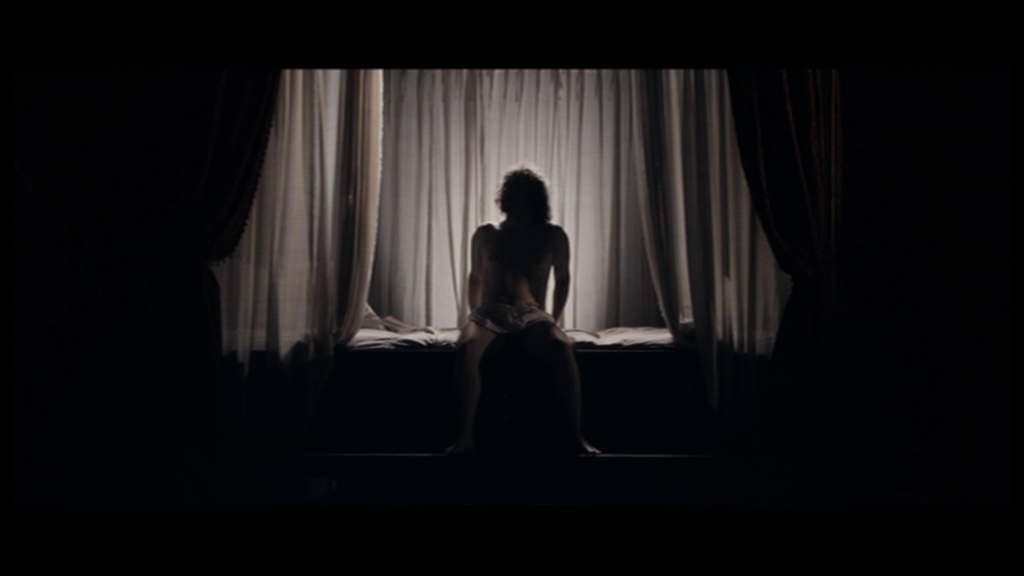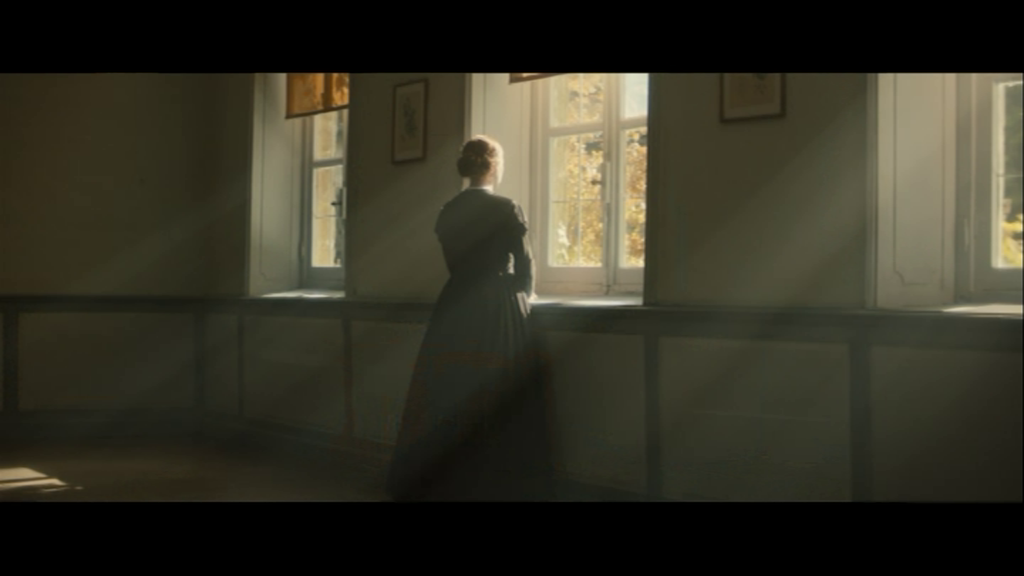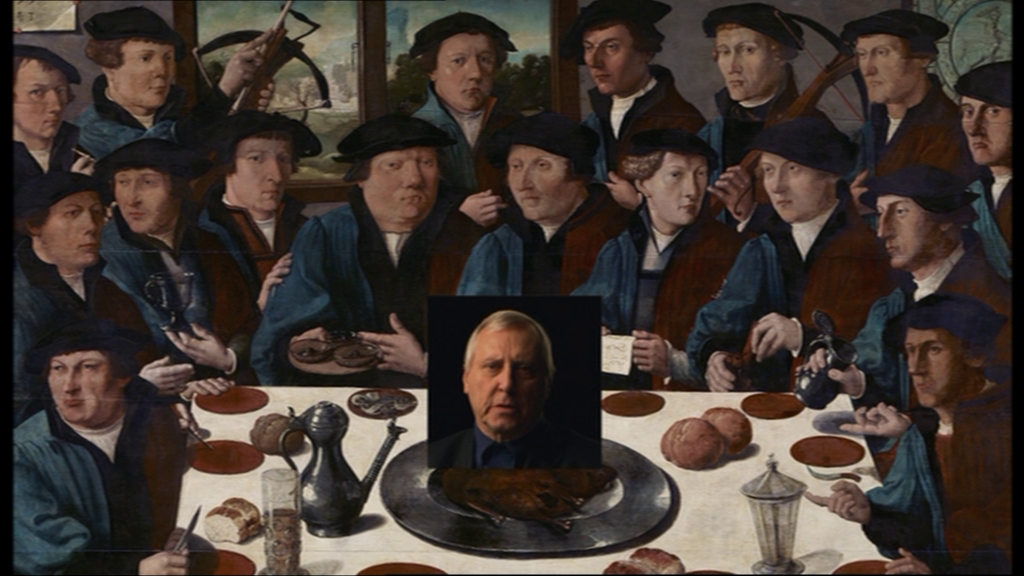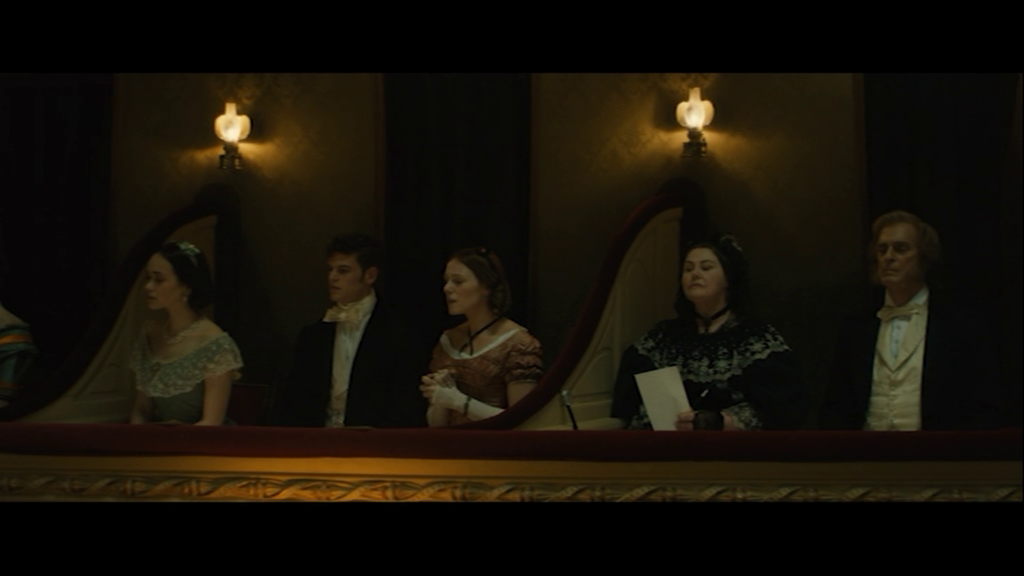Still Here


By chance I picked up and played a couple of DVDs, both by British filmmakers who hit it big (or medium, anyway) in the 80s, and both featuring Jodhi May, whose heyday was early 90s but who is, like Henri ‘Papillon’ Charriere, STILL HERE.


But I couldn’t watch NIGHTWATCHING, Peter Greenaway’s Rembrandt film. I struggle to enjoy Greenaway fairly often, though THE DRAUGHTSMAN’S CONTRACT shows all his tropes working and enjoyable. I’m slightly indebted to Greenaway because I read an interview with him back then where he said he tended to avoid camera movement because it increases audience involvement. I seized on that and decided NOT to avoid camera movement in my own work, though I don’t think I ever got hugely skilled with it.
It is, of course, possible to apply camera movement in such a way as to frustrate audience involvement, and Greenaway eventually started doing that. But I just didn’t feel that NIGHTWATCHING was well made. The sound has a distant, boxy, reverberant quality that makes everything feel desultory. Bad picture can be alibied in various ways, but bad sound is unbearable.
Even Greenaway’s basic filming seemed poor to me. A wide shot with the protagonist (Martin Freeman as Rembrandt) facing away from camera, intercut with an isolated closeup which proves unexpectedly hard to relate to the big picture. And it’s often unclear, in the wide shot, who’s meant to be talking. Add occasional push-ins and pull-outs, seemingly at random, and a truly unproductive confusion is created.

While I’m kicking Greenaway (don’t worry, it gets better later), I also picked up the very enjoyable career study Being Naked Playing Dead: The Art of Peter Greenaway by Alan Woods. Sizable interview/s with the man himself, who likes pontificating, and at one point declares that Scorsese’s use of film grammar is essentially unchanged from Griffith’s.
If you can really speak of film having a grammar that’s in some way equivalent to the grammar of a language — and I think that’s an analogy that disintegrates under you as soon as you start to put your weight on it — I would imagine such a grammar might include things like (1) use of high and low angles (2) cutting patterns (3) forms of camera movement (4) motivations for moving the camera, and of course (5) colour and (6) sound and (7) music.
When you factor these things in, it’s clear that Scorsese’s so-called grammar is different from Griffith’s in nearly every particular, and when we consider those in which there’s common ground — basic continuity and contiguity editing, constructive editing, etc — we run into the embarrassing fact that Greenaway’s “grammar” shares those exact qualities.
In fact, the classic Greenaway approach of long-held tableaux-style master shots, somewhat radical though it is, harkens back to EARLY Griffith, before he developed the cutting strategies so central to modern cinema. I don’t hold this fact against Greenaway, the decision to go backwards is bold and interesting, but it does look to me like he’s casting pebbles about in a greenhouse.


Good news, though — NIGHWATCHING — which came out in 2007 and which I totally failed to notice at the time — comes with a bonus, REMBRANDT’S J’ACCUSE…!, an essay-film on a separate disc which is a feature in its own right. And it’s TERRIFIC. Essentially a close analysis of Rembrandt’s masterwork The Night Watch, presented by the director himself, it’s engaging, quirky and elegant — all the Greenaway virtues. (Even Greenaway’s pronunciations — Z’accuse and Cis-tyne Chapel — are quirky.) It uses the splitscreens and little embedded boxes and superimposed texts he pioneered in PROSPERO’S BOOKS and A TV Dante, which never seemed like brilliant innovations to me, most of the tricks having been seen on, for instance, The Kenny Everett Video Show, but which are more obviously suited to a documentary than a drama.
The idea of a detective story combined with an examination of artist’s work — the theory is that The Night Watch points a finger at a recent scandal/murder — is of course a repeat of DRAUGHTSMAN’S, but the essay-film finds fresher ground than the drama, because it’s a different form. And NIGHTWATCHING serves a more useful purpose when cut into clips and interspersed through this piece than it does on its own. Greenaway has always liked to pontificate — he accompanied A ZED AND TWO NAUGHTS with a short lecture-film in which he helpfully explained what he was up to — seemingly buying into Tom Wolfe’s criticism of modern art that it needed “a working theory” for critics to be able to actually perceive it.


But this one is really nice. I like Greenaway’s early shorts and documentaries — 26 BATHROOMS is delightful — and though I’m agnostic about the conspiracy theory presented here, it’s an entertaining and catchy excuse to examine the painting and Rembrandt’s process in minute detail.


The other film I picked up was Terence Davies’ A QUIET PASSION, which came out in 2016 and again completely passed me by. It’s about Emily Dickinson (Cynthia Nixon) very much in the classic Davies style and I enjoyed it. He does very well by the poetry (my one complaint about Campion’s BRIGHT STAR is that whenever anyone recited a poem, I got completely lost, could not follow what was being said at all). IMDb reviewers complain that we never see Dickinson writing (as if that would be an illuminating thing to look at) and that Davies makes various alterations to the historical record. He’s accused of making Dickinson less kind. I think this may be a case of the filmmaker identifying with his subject and seeing her through that filter. Davies always seemed absolutely lovely, but he’d describe himself as prickly, impossible to live with, a loner, and maybe he’s projecting that a bit onto Dickinson. Which seems a reasonable thing for an artist to do, though if your interest is entirely in her and not in him you might object. I of course was almost completely ignorant of the facts in the case so I just accepted it as a story. It’s a story that would be hard to summarise without making it seem, well, nothing. Poet goes largely unrecognised, gets ill and dies. Davies’ work often does this unpopular thing of saying, well, obviously this stuff might seem depressing, but we need to deal with it.



It’s very beautiful, though. He’ll start with a locked-off, planimetric shot that’s quite Greenaway-like, but then the camera will take off and soar — often onto another locked-off composition that we then sit and watch for a while. A slightly painful stasis with moments of elation and freedom. I do wish Davies had fulfilled his dream of making a musical, but in a way he did.
There is one laugh-out-loud moment: when Keith Carradine, as Dickinson’s dad, poses stiffly for a portrait, the photographer asks him if he might like to smile. “I *am* smiling,” intones Carradine, not smiling.

Davies, who is sadly no longer here with us, was an even more engaging orator than Greenaway — a REALLY lovely speaking voice, resonant and full of passion — and his OF TIME AND THE CITY is one of my favourite things of his, so I listened to his commentary afterwards just to enjoy the sound of him. Milk and honey.
NIGHTWATCHING stars Bilbo Baggins; Lucy Collins; Eily Bergin; Alice Munro; Truman Capote; Childchewer; Conann 45 ans; and Mona.
A QUIET PASSION stars Nancy Reagan; Constance Wilde; Bowie; Griselda Fishfinger; Moira Onions; Amy Harrison; and Alice Munro.
This entry was posted on June 12, 2024 at 6:38 pm and is filed under FILM with tags 26 Bathrooms, A Quiet Passion, A Zed and Two Naughts, Alan Woods, Being Naked Playing Dead: The Art of Peter Greenaway, Bright Star, Cynthia Nixon, DW Griffith, Emily Dickinson, Jodhi May, Keith Carradine, Martin Freeman, Nightwatching, Of Time and the City, Peter Greenaway, Rembrandt's J'Accuse...!, Scorsese, Terence Davies, The Draughtsman's Contract, Tom Wolfe. You can follow any responses to this entry through the RSS 2.0 feed. You can leave a response, or trackback from your own site.
This site uses Akismet to reduce spam. Learn how your comment data is processed.
Leave a comment